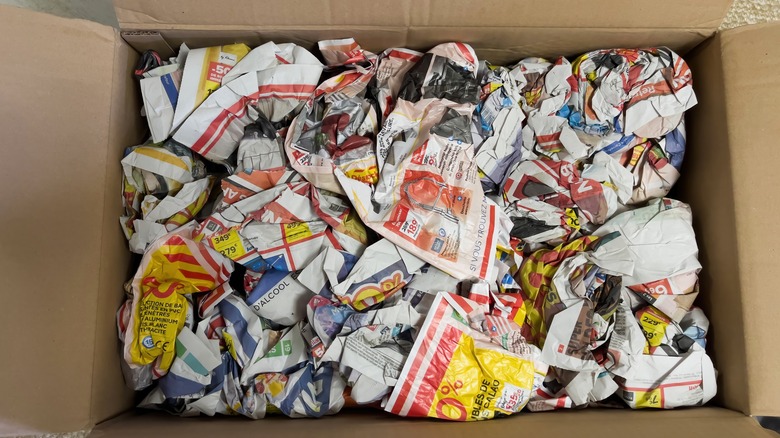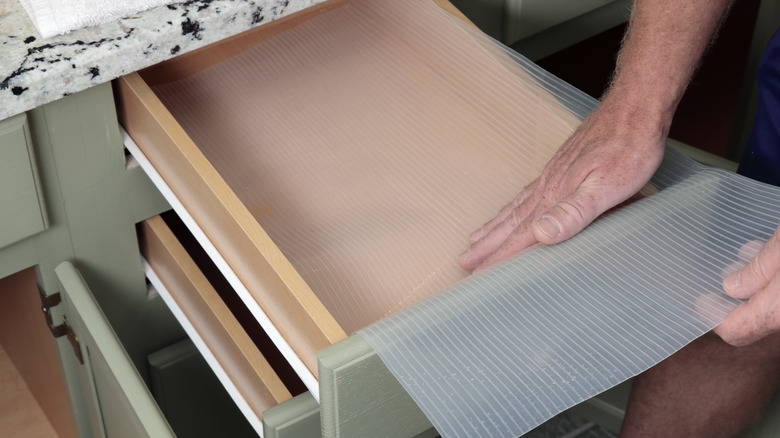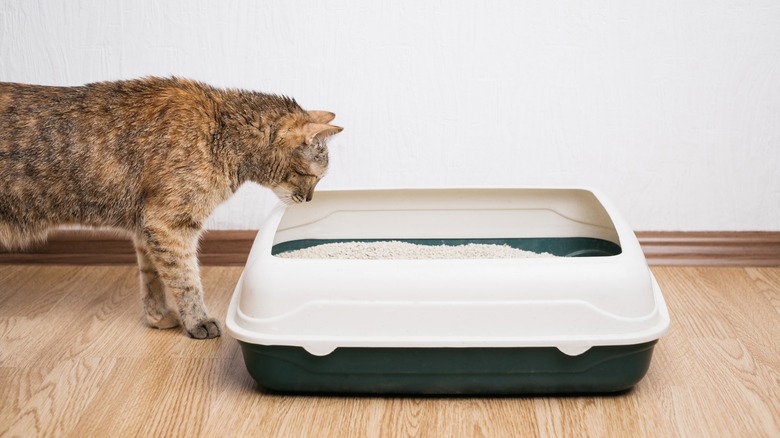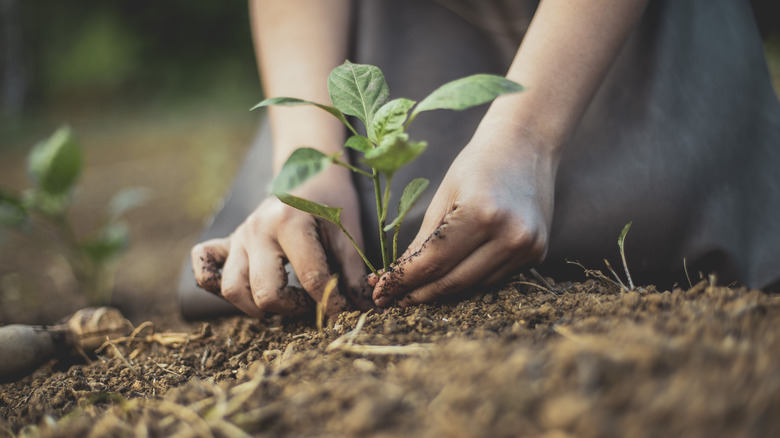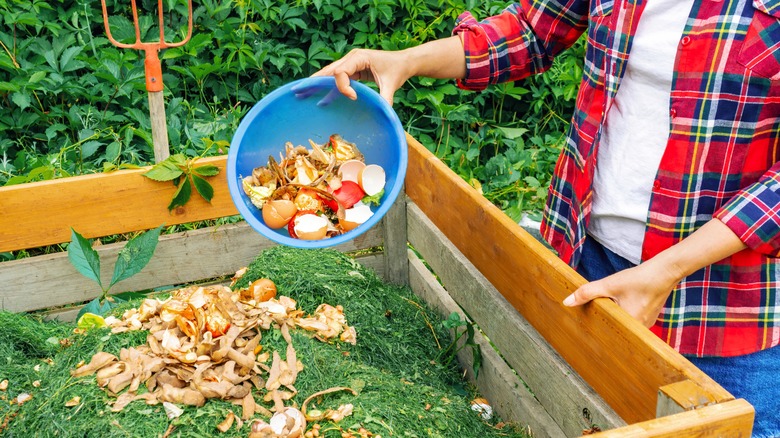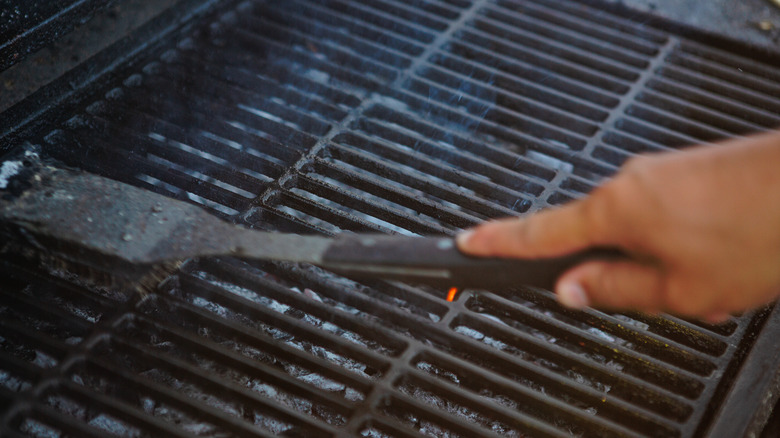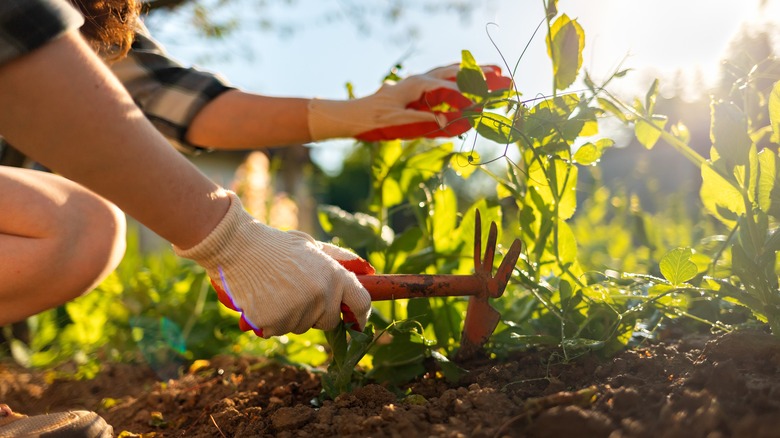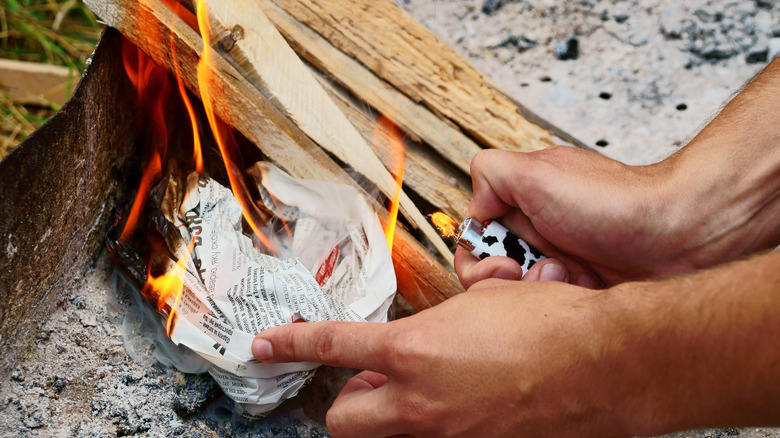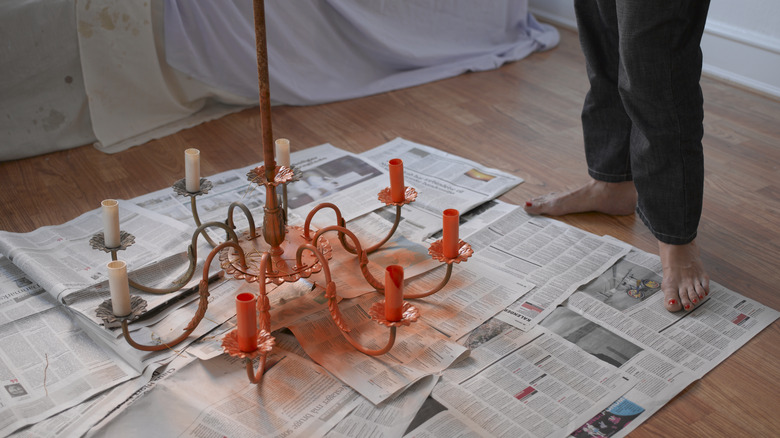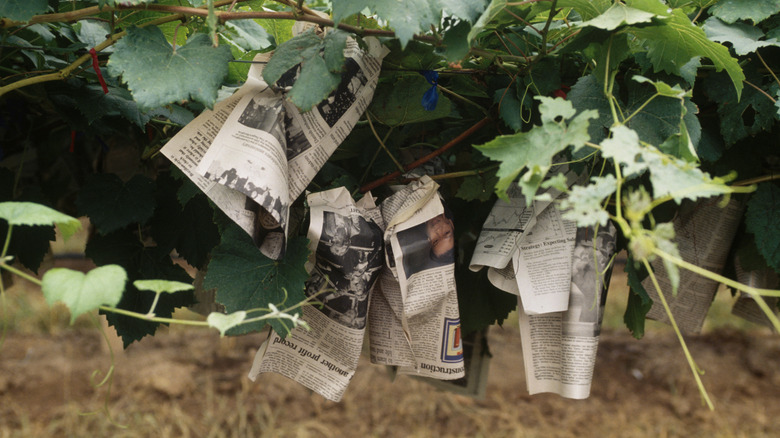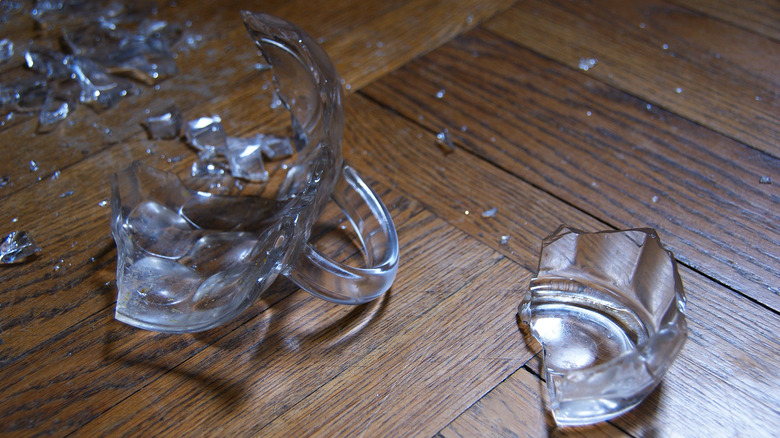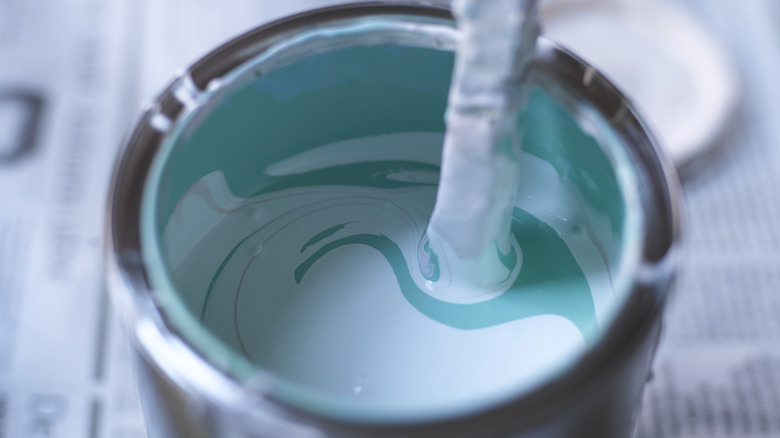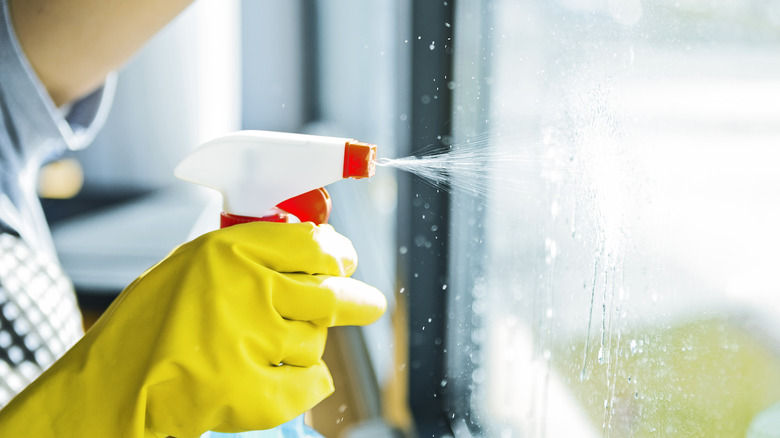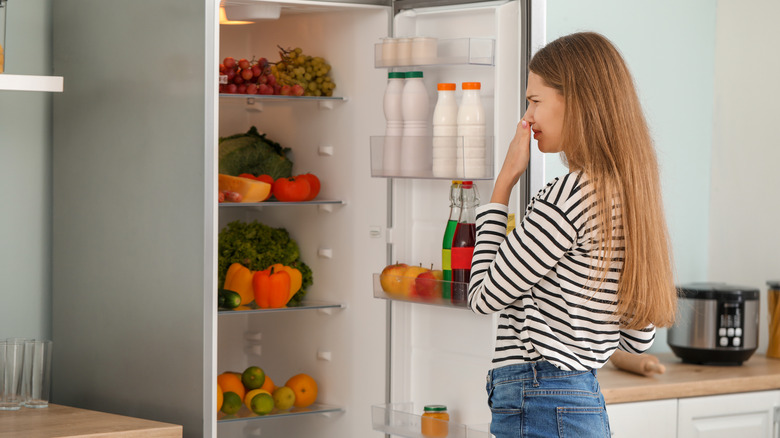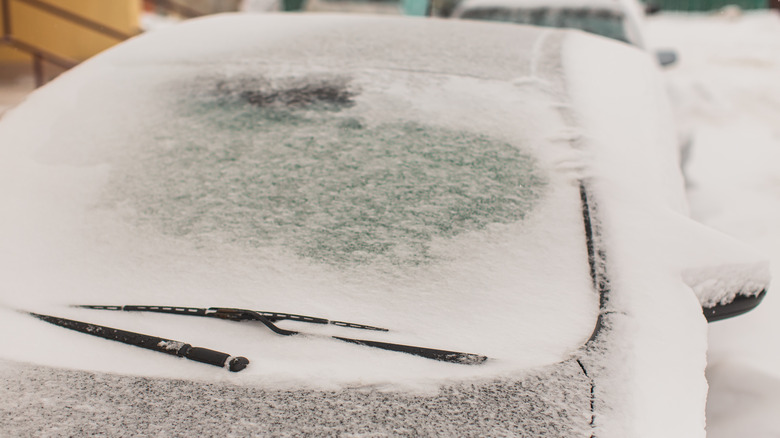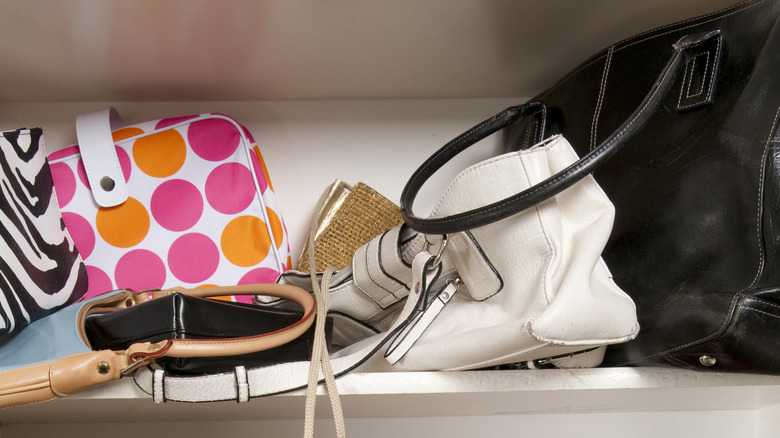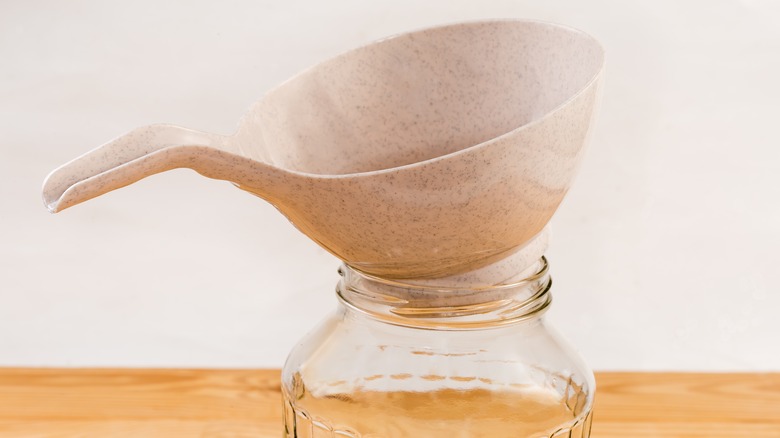Clever Ways To Repurpose Old Newspaper To Use Around The House & Garden
If you subscribe to a daily or weekly newspaper, you know that the number of old copies you have lying around can quickly add up. Unless you're saving clippings of a major historical event or a story of particular personal importance, most of that paper is going to waste. Luckily, newspapers were meant to be cheap and disposable. However, the fact that they're printed on a unique type of paper made out of wood pulp that's fittingly referred to as newsprint can actually mean they're better suited for various jobs around the home and garden, from absorbing odors to planting seedlings.
Instead of tossing your old newspapers in the recycling bin, consider keeping some on hand to use around your space. Recycling is certainly more environmentally friendly than tossing your old papers in the trash, but reusing them for an additional purpose and reducing the amount of other products you purchase by relying on old newspapers instead is a much more comprehensive approach to going green. In the end, doubling up on your usage of items you already have lying around the house can help to reduce your environmental impact, decrease the amount of clutter you face, and even save you a bit of money.
Pack items safely
Using newspapers as packing material is one of the most common hacks out there, but for good reason. A large number of thin pages means you're able to wrap individual items so they don't get damaged, and sheets can easily be crumpled up to fill unwanted space and keep things from bumping around. If you intend to store your box in the attic or a closet for a while, this layer of paper protection can even act as a fun time capsule to explore the current events when it's time to reopen the box after a few months or even years.
Line drawers and cabinets
Lining your drawers and cabinets is an essential step if you want to ensure they stay in good shape for as long as possible, especially if you're working with real wood that hasn't been finished or sealed. You can buy plastic liners in stores, but newspaper will work just as well, doesn't include something that's non-biodegradable, and is free — besides the cost of a subscription, of course. Simply lay out a few pages in the bottom of your drawers and shelves, trim them to size, and replace the sheets periodically if you notice wear and tear or if they get wet.
Place underneath kitty litter
Litter boxes are notoriously smelly, especially if you have to keep them in an enclosed space like a bathroom or bedroom. A bit of newspaper can help to make the cleaning process easier and reduce unpleasant odors. The next time you replace your cat's litter, lay down a few sheets on the bottom of the litter box. This layer will prevent litter from sticking to the bottom of the box and help to absorb any smelly liquids or lingering odor. Scoop as normal, and when it's time to replace the litter completely, throw out the old newspapers and replace them with a new, dry layer.
Deodorize stinky shoes
Foot and shoe odor can happen for a myriad of reasons, but one of the most common culprits is moisture, whether it's from sweat or stepping in a puddle. To help combat this, try stuffing any particularly-smelly shoes with newspaper, then leaving them out in the sun. The newspaper will absorb both excess moisture and unpleasant smells, and the sunshine will further help to dry them out and kill bacteria. If they're still stinky after a day or so, swap out the newspaper with a fresh page and place them out in the sun again to hopefully eliminate the rest of the stubborn smell.
Move heavy furniture
Rearranging your living spaces is a great way to change up the vibe without having to spend any money. However, moving furniture, especially if you're doing it alone, can be quite the struggle. If you want to easily be able to push your couch or reorient a bookshelf, try adding some newspaper under the feet. This added layer should make your furniture easier to push so you don't need someone to help you carry it, and it can also reduce the chances of you leaving scratches and nicks on your flooring from sliding it around.
Plant seedlings
Newsprint, because of how thin and pulpy it is, breaks down more quickly than other varieties of paper. Because of this, it can be used in the garden if you need to plant a pot that will gradually dissolve away. Layer a couple pieces of newspaper on top of one another to create a small cup, then use this to plant your seed. Once it has sprouted a bit and you're confident it can survive in the conditions outdoors, bring it outside and plant the entire seedling, makeshift newspaper pot and all. It won't disappear immediately, but it will break down over time without harming your soil.
Add to compost as brown matter
Despite popular belief, composting isn't as simple as just tossing food scraps into a bin. To make sure everything breaks down and results in a mix that's nutritious enough to feed your soil down the line, it's necessary to create some balance between green matter like vegetable skins, grass clippings, and tea bags and brown matter like dried plants, straw, and paper. Newspaper is a great choice to add in to your compost bin, especially if you've been heavy on the food scraps or yard trimmings lately, and it can even help to reduce odors if you've started to notice an unpleasant smell.
Clean the grill
Nothing beats a backyard barbeque during the summer, but cleaning up after the festivities can be tedious. Grill grates are notoriously difficult to scrub clean, as burnt on grease and food debris combined with a wealth of nooks and crannies is a recipe for disaster. Luckily, newspaper can offer a solution to help you seriously cut down the time you have to spend scrubbing. Make sure your grill is off and mostly-cooled, then place a layer of wet newspaper over the surface. Close the grill and peel the newspaper off after about an hour — a large amount of that burnt-on debris will come off too.
Kill weeds
Having fertile soil in your garden is fantastic for cultivating whatever plants you're working to grow. Unfortunately, weeds love to come in and take advantage, too. Pulling weeds individually or spraying them with herbicide can help control the problem, but this can get tiresome, especially if you have a large overgrown patch you need to take care of. For an all-at-once approach, try covering the patch of weeds with newspaper and topping it with a layer of mulch, soil, or compost. The weeds will die and the paper will eventually break down, helping to further nourish your soil.
Make firestarters
Building an extreme weather survival kit can help you during serious storms like blizzards, hurricanes, and flash floods, and a firestarter is an essential item to include. Fire is useful for cooking food, creating heat, and providing light, and sometimes a simple lighter or matchbox won't cut it. Firestarters are essentially supercharged kindling you can light that will help carry a flame even when put up against wet wood or heavy winds. To create some out of newspaper, tightly roll a few pieces of paper, cut the roll into inch-long pieces, tie a twine wick in the middle of each piece, and double dip them in wax.
Protect your floors
Here at House Digest, we love sharing crafting and DIY projects, but all that painting, staining, and treating can cause some major issues if you end up with drips or splatters on your floors. To protect them without having to buy any additional materials, look no further than newspaper. Lay down a thick layer to help catch any potential spills, then simply pick it up and toss it when you're done. It's not only useful for crafting projects, either. If you know you're facing a potential future mess whether it's snowy shoes or muddy pawprints, lay down a few sheets of newspaper to avoid an involved cleanup.
Insulate plants during winter
The chilly months of the year can wreak havoc on outdoor plants. However, if you're only dealing with occasional frosts, it's nothing a little extra insulation can't help. When you know that temperatures are going to dip below freezing overnight, try covering your more vulnerable plants with a layer of newspaper to help trap in heat and protect your plants from frost. If you regularly face more extreme conditions, this thin layer of protection likely won't cut it, but it's a solid solution if you're only facing a handful of unexpectedly dry, chilly days throughout the winter months.
Clean up broken glass
Breaking a glass or shattering a frame is obviously disappointing, but what makes the whole ordeal even worse is the process of cleaning it up. Broken glass is notoriously difficult to clean without winding up with a cut finger or small shard in the hand, but it's important to ensure that you're ultra-thorough to avoid leaving behind any potential hazards. Thankfully, newspaper can help throughout the process. Use a sheet as a barrier on your hands when picking up large pieces, then wet it and lay it over the area to collect any smaller bits left behind that could easily be missed with a broom.
Remove musty odors
If you're facing odors that are caused by moisture, newspaper will be your best friend. It can help to trap and neutralize odors while also absorbing any moisture left in the air that could be causing issues. Place a few crumpled up balls in a suitcase to rid it of that after-travel odor, toss a couple sheets in your linen closet if you're worried about the humidity in the air, or use some as a liner in bathroom cabinets that are frequently exposed to steam and water. Change them out every few days — or each time you receive a new copy — for the best results.
Replace rags
Having some cheap rags lying around for cleaning is absolutely essential, whether you like to repurpose old t-shirts, cut up past-their-prime beach towels, or purchase them directly from the store. However, some messes just aren't worth sacrificing something you could use again, and that's where newspapers come in. They can do the job when you need to clean up substances that won't easily wash off of your rags like paint and oil. Use the newspapers to clean up, then easily toss them without having to worry about ruining your fabric towels.
Clean windows
There are plenty of solutions to help guarantee that you're left with spotless, squeaky-clean windows, from wiping away excess cleaner with a squeegee to polishing with a microfiber cloth. However, if you're in a pinch, a few sheets of newspaper can also do the trick. The unique paper blend that gives newsprint its distinctive feel is also less likely to leave behind traces of lint than something like a traditional towel or paper towel, and its ability to absorb liquids means that you won't have to deal with leftover smudges of liquid or water marks once everything dries down.
Line refrigerator drawers
High temperatures have a habit of enhancing smells, but that doesn't mean that chiller spaces like your icebox aren't prone to developing unpleasant odors, too. While the scent might not be as extreme as if you were to leave these items on your counter, past-its-prime produce, expired meat, and curdled dairy can combine to create quite the nasty smell in your fridge. To help combat this, consider lining your drawers or shelves with newspaper — after removing the stinky culprit, of course — to help nix the lingering odor and soak up moisture. Replace them as needed, especially if you notice them getting wet or soggy.
Prevent frozen car windshelds
If you frequently face chilly weather in your area, you know that defrosting and scraping your windshield each morning can be quite the hassle. Luckily, there's a handy hack to help take care of ice and snow that only requires a couple pieces of newspaper. Lay down a layer over your windshield at night before it's set to freeze over, then remove the frozen sheets in the morning to reveal a completely-clear area. This will allow you to see the road without having to scrape off ice or wait for everything to melt.
Keep the shape of stored shoes and bags
Purses and shoes, especially ones made of real or faux leather, have a tendency to lose their shape in storage. When stacked up and crushed down to fit as many in one storage bin or on one shelf as possible, this makes sense. These materials have a sort of memory, so they'll often crease or crumple the same way they did when stored. To prevent this fate, simply stuff them with newspaper to help keep their three-dimensional shape. Even if they're stuffed in a storage bin, they'll come out looking like they're brand new.
Add padding under a tablecloth
Tablecloths are a great way to add an extra dose of formality and protection to a table setting, but a thin layer of cloth isn't going to protect against much more than the occasional drip from a glass or a dropped crumb of food. If you want the same look with a bit more gusto, consider placing some newspaper under your tablecloth to increase the amount of padding and further protect your surface from heat and liquid, especially if your table is made of real wood or in need of an extra coat of sealant.
Create a makeshift funnel
Funnels are great to have on hand if you want to avoid spills, but they're also a bit of a pain to store and clean. If you just need a funnel temporarily and you're dealing with dry goods, try shaping one out of newspaper. Create a cone shape with an opening large enough to fit whatever you're pouring through, then hold it steady to fill your desired container or jar. If you're filling multiple containers, you can also secure the newspaper with tape to ensure it doesn't lose its shape when you set it down.

